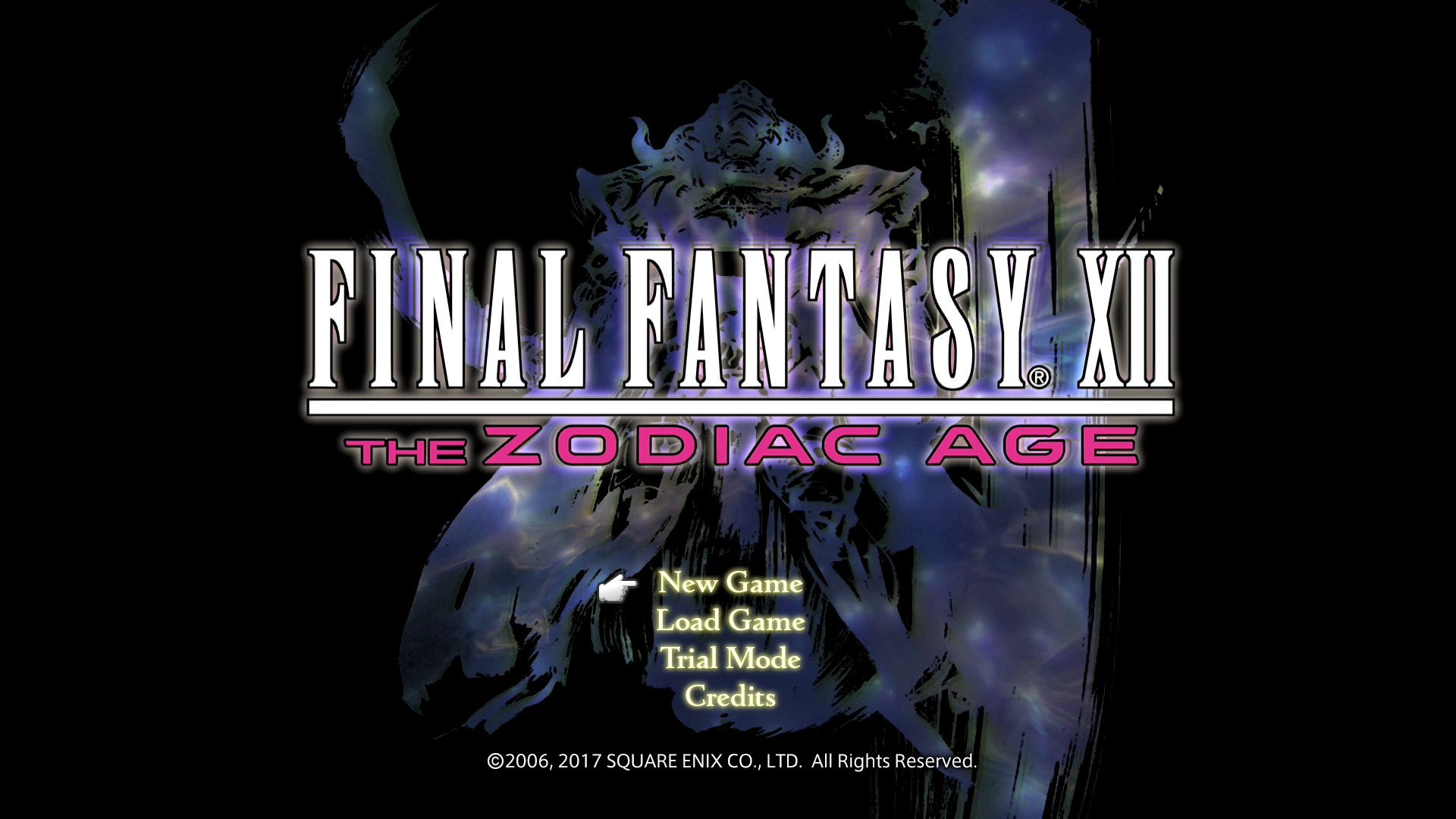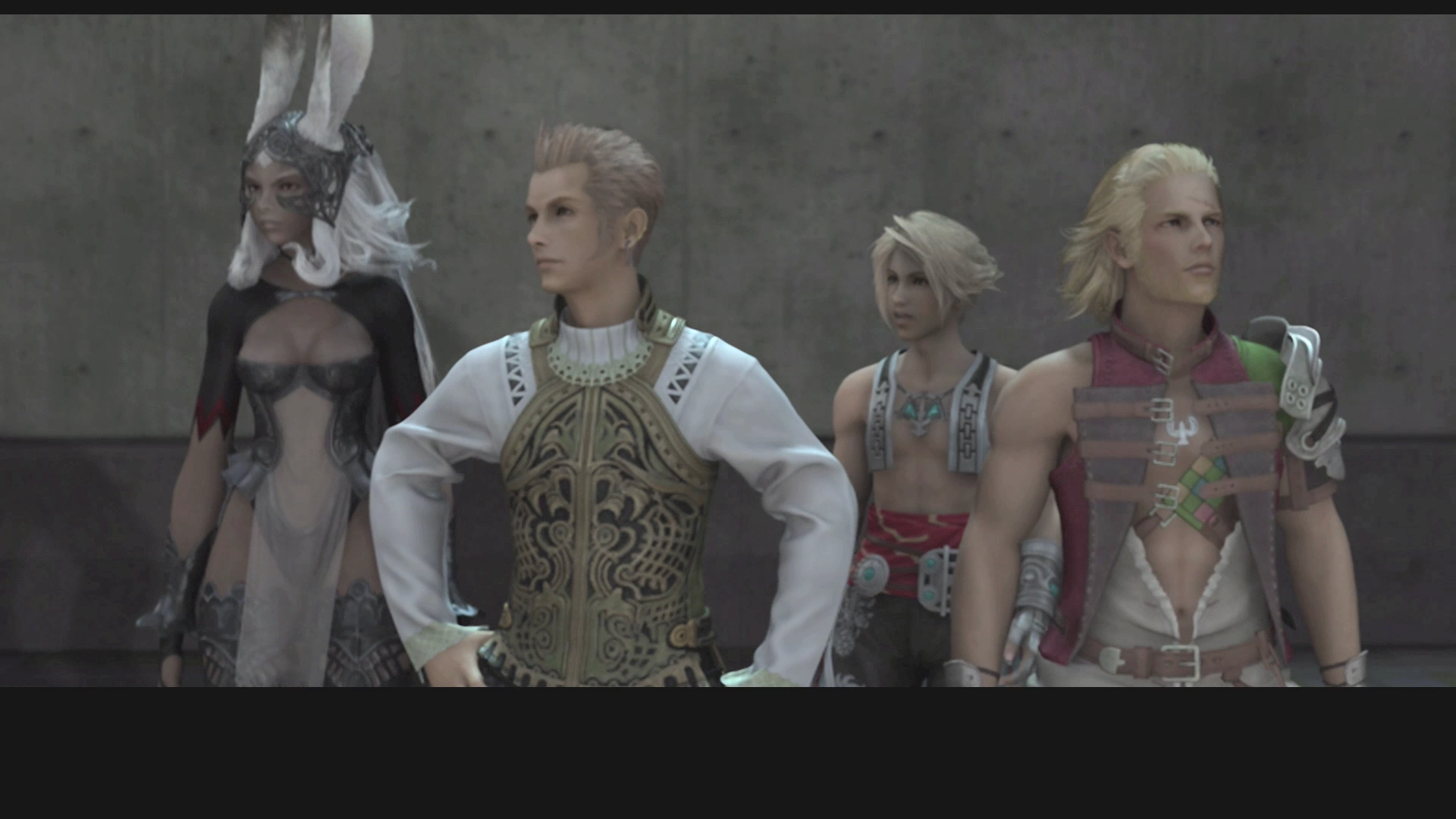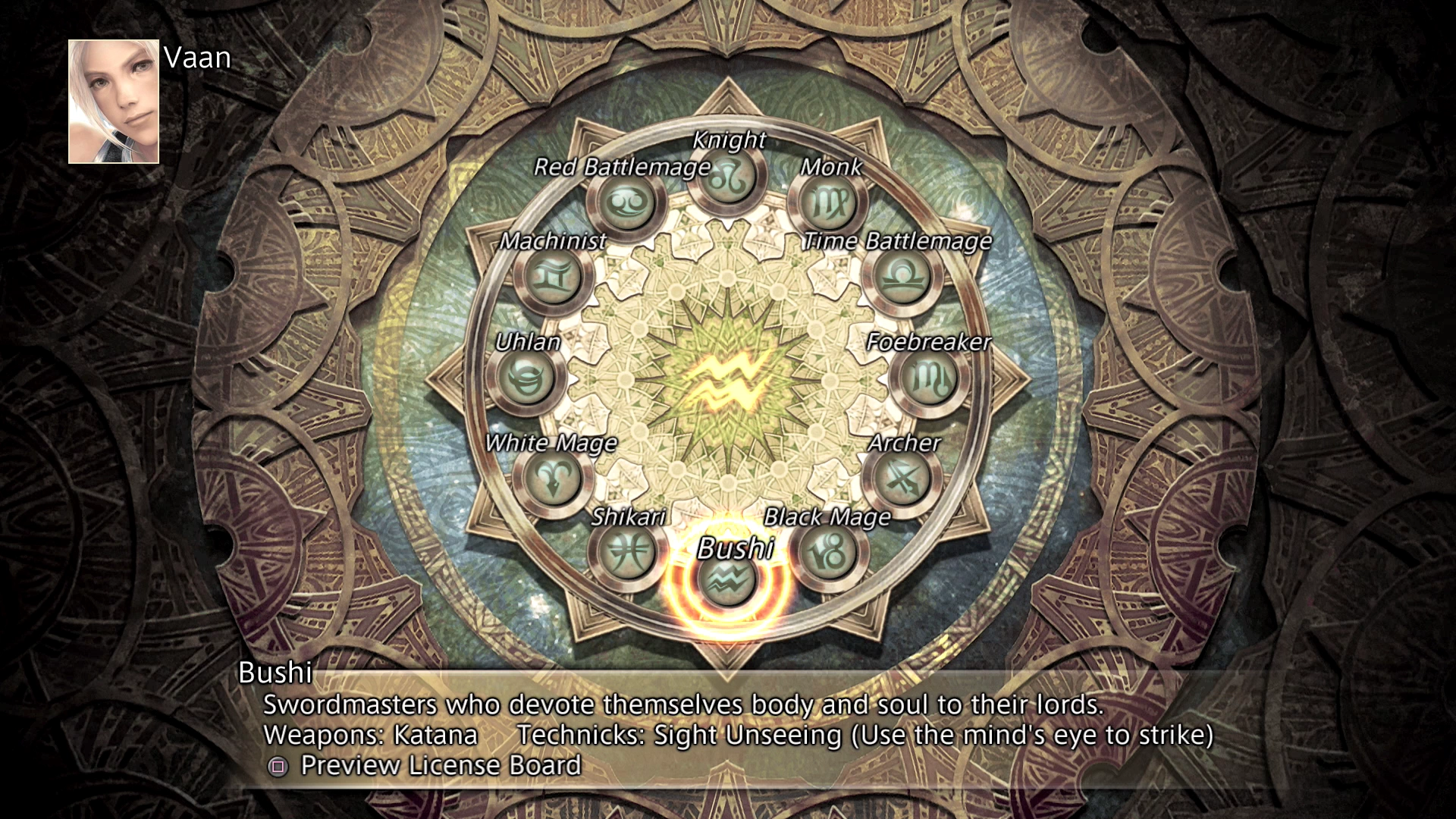Home Page
Final Fantasy XII spent five years in development, starting in 2001, and it was finally released to North American audiences in October 2006. The game was released on PlayStation 2, and later re-released on PlayStation 4 in July 2017 with updated graphics, items, and a completely redesigned job system.

The re-released version of the game on the PlayStation 4 was titled “The Zodiac Age”. This new version was based on the International Zodiac Job System version of the game, which was developed and released in Japan many years earlier. This walkthrough has been updated and includes elements of the Zodiac Age version of the game (which is much more fun to play!).
Review
Final Fantasy XII stands out among Final Fantasy games as it differs quite heavily from previous installments in the series. The graphics and game engine were completely redone, the combat system is unlike any of the earlier games, and the setting strays from fantasy styles and settings found in Final Fantasy VI, Final Fantasy VII and Final Fantasy IX.
The first thing to note about the game is the massive jump in graphics and the new artistic style adopted by the developers. While it is very dissimilar to Final Fantasy VII, VIII, IX, and X, gamers who previously played Final Fantasy XI, an MMORPG unlike any other Final Fantasy game, will notice similarities in character designs and settings.

The cast of characters in Final Fantasy XII is one of the strongest of the Final Fantasy games to date. There are no ridiculous and nonsensical characters like Cait Sith (from Final Fantasy VII) or Quina (from Final Fantasy IX). The main cast includes Vaan, Balthier, Fran, Penelo, Basch, and Ashe.
The only character who is not a human (referred to as a “Hume” in-game) is Fran, who is a Viera. While her race’s attributes are very similar to elven races found in other fantasy-style games and literature, they fit well within the setting of this game.
The world of Ivalice has appeared in previous Final Fantasy titles, including Final Fantasy Tactics and Final Fantasy XII: Revenant Wings. The scenery across the various zones looks fantastic and works well with the story, though many fans complained that the story was too “political.” This political focus didn’t bother me, as I prefer a more politically stylized story rather than one that’s more fantasy-driven, but it doesn’t work well for everyone.
Another highly polarizing aspect of the game is the Gambit system, which allows players to set up specific actions for characters that are completed only under certain conditions. For example, you can create a Gambit that causes your character to automatically use a Potion on themselves or a party member when their HP drops below 50%.
The Gambit system allows you to build specific tactics around moves. It focuses heavily on the strategic aspects of the game, emphasizing preparation before battle rather than actions during combat. It did not go over well with every player, but I found it both challenging and rewarding, especially once you start to master the basic concepts.

This game is also the first in the series to remove the random encounters with foes on the battlefield and the forced fights. Instead, monsters and enemies appear in the overworld, and you can now run past them if you choose to. This style has now been repeated in many of the newer Final Fantasy titles (such as Final Fantasy XIII and XV). Finally, it removes one of the more annoying and unavoidable aspects of previous games.
This title is not without its flaws, though; for example, there are balancing issues with a few of the characters. In the PlayStation 2 version of the game, Fran, Penelo, and Balthier (to a lesser extent) are underpowered, and it does not make sense to use them during a playthrough. Many of these issues have been corrected in updated versions of the game, making all characters useful in certain situations and for specific jobs.
The game also suffers from spell load times that can cause noticeable delays during faster-paced battle sequences. If you noticed this during you’re playthrough, don’t assume that your PlayStation 2 is broken like I did! This stuttering is an unavoidable issue the game suffers from, and players will have to endure it while playing.

The game also employs a strange replacement to the Limit Break / Trance / Overdrive system: Quickenings. It can take a few tries to get used to Quickenings and learn how to chain them together, which significantly increases the damage they deal. But the sheer randomness of being able to hit the correct buttons in order and the length of time that the battle is held up while you perform a Quickening Chain is hugely detrimental to the overall experience.
You can use Quickening Chains to make many of the battles easier. Still, I avoided them entirely during my first playthrough due to the ‘boringness’ associated with spending several minutes staring at the Quickening screen.

The License Board system is unique. In the early stages of the game, it offers quite a bit of customization for each of your characters, but this tends to run thin later on in the game as all the characters begin acquiring the same moves and Magick spells.
The Zodiac Age (as well as the International Zodiac Job System version) solves some of these problems by adding character classes that will significantly change the mechanics of a standard playthrough.
Overall, I enjoyed this game and would rank it in my top 3 Final Fantasy games without hesitation. I highly recommend playing the Zodiac Age version, as it includes updated graphics and you won’t have to hunt down an old PlayStation 2 to play the game (or, worse, emulate it). I definitely encourage all Final Fantasy fans to give this game a try. 10/10.
